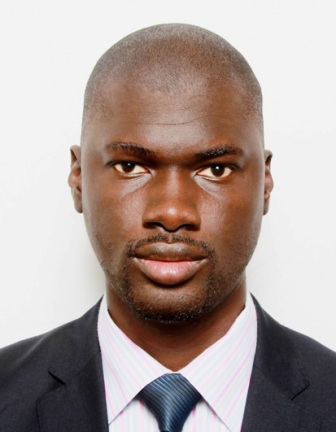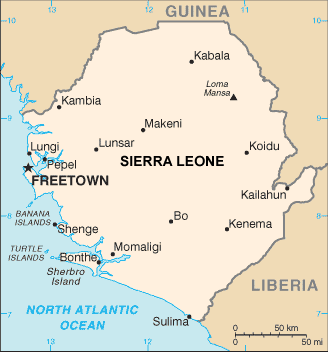Guinea Current fish farmers urged to diversify into mariculture
ACCRA, 28 Feb – Fish farmers from some west and central African countries have expressed the desire to diversify their fish farming activities into the sea in the form of mariculture in the Guinea Current Large Marine Ecosystem (GCLME) region.
Their interests were stimulated by the presentations on mariculture technology, made by the Yellow Sea expert on the subject, Dr. In-Kwon Jang; and by exposure to cage culture technology practised in the freshwater environment of the Volta Dam, Ghana.

Left to Right: South Korean proprietor of the Sun Woo fish farmer on Lake Volta and Yellow Sea LME scientist Dr. In-Kwon Jang, director of the Aquatic Industry Division at the West Sea Fisheries Research Institute in Inchon, South Korea
Dr. Jang is from the Yellow Sea LME (YSLME) project, a major effort by China and South Korea to reduce environmental stress in the sea, using the LME assessment and management approach for restoring and sustaining marine resources, as well as coastal environments.
The GCLME organized the r meeting on mariculture development in the Guinea Current Large Marine Ecosystem. It was held to connect fish farmers in the region with their counterparts in the Yellow Sea who have extensive experience in mariculture, and set the stage for enhanced food security in the GCLME region and entrepreneurial exchange with Fish Famers in the Yellow Sea.
“The workshop on sustainable mariculture development with environmental management is probably the first of its kind in the GCLME and that this in itself is an achievement,” Dr. Mohamed Seisay, the GCLME Fisheries Expert, said.
Dr. Jang’s presentation on the Yellow Sea and on mariculture technology of shrimps in the Yellow Sea and the Sahara Desert stimulated intense participatory discussion. Technical presentations on aquaculture practices and mariculture development potential were also made by Dr. George Daarpaah and Dr. Ayaa Armah from the University of Ghana; Dr. Joseph Ofori and Dr. Ruby Asmah from the Water Research institute of Ghana.
However it was observed that mariculture practice in the marine environment is fraught with difficulties, foremost among which is the method of securing fish cages amidst high ocean swells, often violent wave action and strong seasonal currents. These are conditions potential marine fish farmers would face in the Guinea Current region.
Despite these challenges, the meeting also underlined the role of the private sector to invest in development of sustainable fish markets for their mariculture products; for national institutions to develop an appropriate aquaculture policy and legal framework for mariculture development; the need to build capacity and train fish farmers in the Guinea Current region; and make efforts to ensure that commercial fish farms are sustainable through a strengthened private sector.
Other recommendations are to research into producing fish feed in the region; conduct a study on the feasibility for mariculture in the region; and identify the potential and return on investments. In this respect, participants suggested that a couple of sites should be identified for mariculture pilot projects which could, if successful, be replicated to scale in suitable sites in the region.
Mariculture has been seen as an additional way to secure, fisheries, the fast-dwindling source of protein for the GCLME region’s 300 million people, or rearing fish in already overexploited areas. The benefits would be multiple. Mariculture provides a new form of livelihood for fisher-folk who might be made redundant when restricted fishing loads come into effect in the near-shore areas of the GCLME. This measure is designed to allow natural fish stock to recover to their original levels; fish would be abundant and could be exported in a controlled manner; and the destruction of biodiversity would be reduced.
An interim network of Guinea Current Fish farmers was created with the Nigeria catfish farmer from Samaritan Fish farms, David Ogwu, as interim president. The main objective of this interim network is to promote mariculture development in the Guinea Current. The network will link marine fish farmers from Guinea-Bissau to Angola and provide them the technical backing on mariculture, through partnership with the Yellow Sea Large Marine Ecosystem in the Far East and information exchange.
As a step toward establishing partnership between GCLME and YSLME, the meeting witnessed fruitful interaction between the Yellow Sea scientist with those of the GCLME, as well as the fish farmers. The interaction is expected to continue as post-workshop activity.
The Executive Secretary of IGCC, Dr. Stephen Donkor, urged GCLME fish farmers to forge networking within national aquaculture associations and the yellow sea farmers to stimulate interest and investment in this innovative technology. He said it was important for the private sectors to ensure sustainability of this technology; also recommending that a pilot mariculture demonstration project be established one of the GCLME countries as an important step in capacity-building and dissemination of the technology.
By Olu Sarr, Communication Adviser, Interim Guinea Current Commission/ Guinea Current Large Marine Ecosystem
Photo Credits: Yao Modenou/IGCC GCLME
Stay with Sierra Express Media, for your trusted place in news!
© 2011, https:. All rights reserved.








